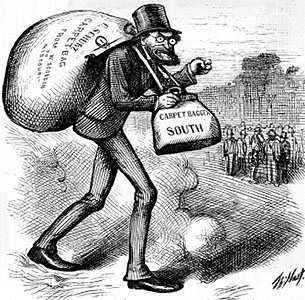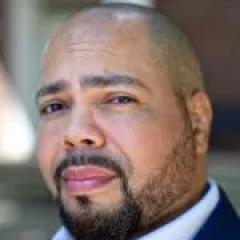Ulterior Motives?: School “Reform”, Rich, Poor, and Land Grabs

Cloaking Inequity has explored the ulterior motives of school “reformers” in prior posts (See for example Walking Away From High Stakes Tests, A Noble Lie and Letter to Civil Rights and school “choice” advocate (p.s. neoliberals skip this) and Update on Smart ALEC: Education, Privatization, and the Pursuit of Profit. Recently, Leslie T. Fenwick, the Dean of the Howard School of Education explored their ulterior motives and wrote a scintillating piece arguing that urban school “reform” is really about land development (not kids).
She wrote in Ebony:
The truth can be used to tell a lie…
The lie is that schemes like Teach For America, charter schools backed by venture capitalists, education management organizations (EMOs), and Broad Foundation-prepared superintendents address black parents concerns about the quality of public schools for their children. These schemes are not designed to cure what ails under-performing schools. They are designed to shift tax dollars away from schools serving black and poor students; displace authentic black educational leadership; and erode national commitment to the ideal of public education.
The answer is this: Whether they are solidly middle- or upper-income or poor, neither group of blacks controls the critical economic levers shaping school reform. And, this is because urban school reform is not about schools or reform. It is about land development.
She provided a variety of urban examples of her argument exhibited in practice:
In most urban centers like Washington D.C. and Prince George’s County, black political leadership does not have independent access to the capital that drives land development. These resources are still controlled by white male economic elites. Additionally, black elected local officials by necessity must interact with state and national officials. The overwhelming majority of these officials are white males who often enact policies and create funding streams benefiting their interests and not the local black community’s interests.
The authors of “The Color of School Reform” affirm this assertion in their study of school reform in Baltimore, Detroit and Atlanta. They found:
Many key figures promoting broad efficiency-oriented reform initiatives [for urban schools] were whites who either lived in the suburbs or sent their children to private schools (Henig et al, 2010).
How about local control that isn’t actually local control? (Kind of like the parent trigger “reforms” which aren’t actually controlled by parents)
Local control of public schools (through elected school boards) is supposed to empower parents and community residents. This rarely happens in school districts serving black and poor students. Too often “predators eager to exploit schools for their own benefit” (Henig et al) short circuit the work of deep and lasting school and community uplift. Mayoral control, Teach for America, education management organizations and venture capital-funded charter schools have not garnered much grassroots support or enthusiasm among lower- and middle-income black parents whose children attend urban schools because these parents often view these schemes as uninformed by their community and disconnected from the best interest of their children.
In the most recent cases of Washington D.C. and Chicago, black parents and other community members point to school closings as verification of their distrust of school “reform” efforts. Indeed, mayoral control has been linked to an emerging pattern of closing and disinvesting in schools that serve black poor students and reopening them as charters operated by education management organizations and backed by venture capitalists. While mayoral control proposes to expand educational opportunities for black and poor students, more-often-than-not new schools are placed in upper-income, gentrifying white areas of town, while more schools are closed and fewer new schools are opened in lower-income, black areas thus increasing the level of educational inequity. Black inner-city residents are suspicious of school reform (particularly when it is attached to neighborhood revitalization) which they view as an imposition from external white elites who are exclusively committed to using schools to recalculate urban land values at the expense of black children, parents and communities…
The Dean also reframed the problem:
So, what is the answer to improving schools for black children? Elected officials must advocate for equalizing state funding formula so that urban school districts garner more financial resources to hire credentialed and committed teachers and stabilize principal and superintendent leadership. Funding makes a difference. Black students who attend schools where 50 percent of more of the children are on free/reduced lunch are 70 percent more likely to have an uncertified teacher (or one without a college major or minor in the subject area) teaching them four subjects: math, science, social studies and English. How can the nation continue to raise the bar on what we expect students to know and demonstrate on standardized tests and lower the bar on who teaches them?
What if wealthy (mostly non-Black, non-Latina/o) parents are face with school closure? When I first read Fenwick’s piece, I remembered the case of proposed mass school closures mostly in Austin’s Westside neighborhoods. (In Austin, one of the historical patterns of racial and economic segregation was a East (poor), West (affluent) divide by a bisecting I35.) What was happening in Austin?
After the Texas Legislature cut $5.4 billion from the statewide education budget, ramifications cascaded across the state. Austin Independent School District (AISD) in desperation sought to close schools to meet their budget deficit. KXAN reported:
After months of school visits, public input sessions, and a host of meetings, the volunteer 72-member Facility Master Plan task force is ready to make recommendations to the Austin Independent School District board.
On the list of recommendations is merging some campuses, closing some, building new facilities, redrawing boundaries and making “operational efficiency” recommendations.
The task force recommended closing 8 elementary schools and one middle school; redrawing boundaries for one high school and one elementary school; and constructing 3 elementary schools, one middle school and one high school in areas of town where there is overcrowding.
What is interesting about this case is that it is very similar to the what Buena Vista and Ann Arbor schools are facing— two districts in Michigan which are quite dissimilar. What they have in common in that the Michigan Legislature cut $2 billion from schools over the past two years. Essentially, while districts get blamed for these crises, they are made elsewhere by politicians in capitols that have deleted district wiggle room.
Back to Austin. What is interesting is that developers (Dejong and Parsons) were hired by AISD and responsible for the report that led the “taskforce” to argue that capacity, care costs are factors in Austin school closure list.
At the time, I discussed the closures with my graduate student. We had a theory that we would find that the schools chosen by the developers to close would be on very valuable real estate. Austin is a fast growing and popular city and the land values on the west side of Austin are quite high relative to other parts of the city. She cranked out some numbers and we found an interesting trend. Here is what Dr. Amy Williams found:
Dr. Heilig,
I looked into the elementary schools that are closing and they range from $119 to $233 sq/ft which is much higher than the Austin average of $94 sq/ft. All of the elementary schools are either recognized or exemplary.
I have attached a chart of the prices per square foot.
Cheers,
Amy
|
|
Average Price Per Square Foot in Zip Code |
Austin Average Per Square Foot |
|
Barton Hills Elementary |
$164 |
$94 |
|
Brooke Elementary |
$159 |
$94 |
|
Joslin Elementary |
$119 |
$94 |
|
Oak Springs Elementary |
$159 |
$94 |
|
Ortega Elementary |
$108 |
$94 |
|
Pease Middle School |
$233 |
$94 |
|
Sanchez Elementary |
$159 |
$94 |
|
Zilker Elementary |
$164 |
$94 |
Educated and affluent Austin parents did not take the proposed mass school closure plans on the chin.
They showed up en masse at AISD forums for the public to speak on the issue. KXAN reported:
The floor was completely covered Wednesday night at the Delco Center with hundreds of concerned parents wearing t-shirts and carrying posters in opposition of the plan.
They organized and created alternative narratives and strategic plans to combat the “task force.” They fought AISD for every inch. Here is a logo I grabbed from a Facebook group that was created at the time:

The efficiency and school closure arguments made by the “taskforce” and the response by the Westside Austin community via protest and resistance to the school closures all sounds very familiar to Chicago. Except, in the case of Austin, the “reformers” messed with the affluent, and they lost. So in machiavellian fashion, I suspect they will continue to pimp and pick on the poor in Chicago and elsewhere.
In closing, Dean Fenwick argued:
As the nation’s inner cities are dotted with coffee shop chains, boutique furniture stores, and the skyline changes from public housing to high-rise condominium buildings, listen to the refrain about school reform sung by some intimidated elected officials and submissive superintendents. That refrain is really about exporting the urban poor, reclaiming inner city land, and using schools to recalculate urban land value. This kind of school reform is not about children, it’s about the business elite gaining access to the nearly $600 billion that supports the nation’s public schools. It’s about money.
Please Facebook Like, Tweet, etc below and/or reblog to share this discussion with others.
This blog post has been shared by permission from the author.
Readers wishing to comment on the content are encouraged to do so via the link to the original post.
Find the original post here:
The views expressed by the blogger are not necessarily those of NEPC.

